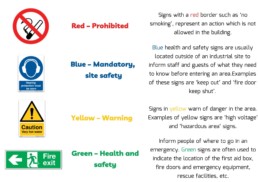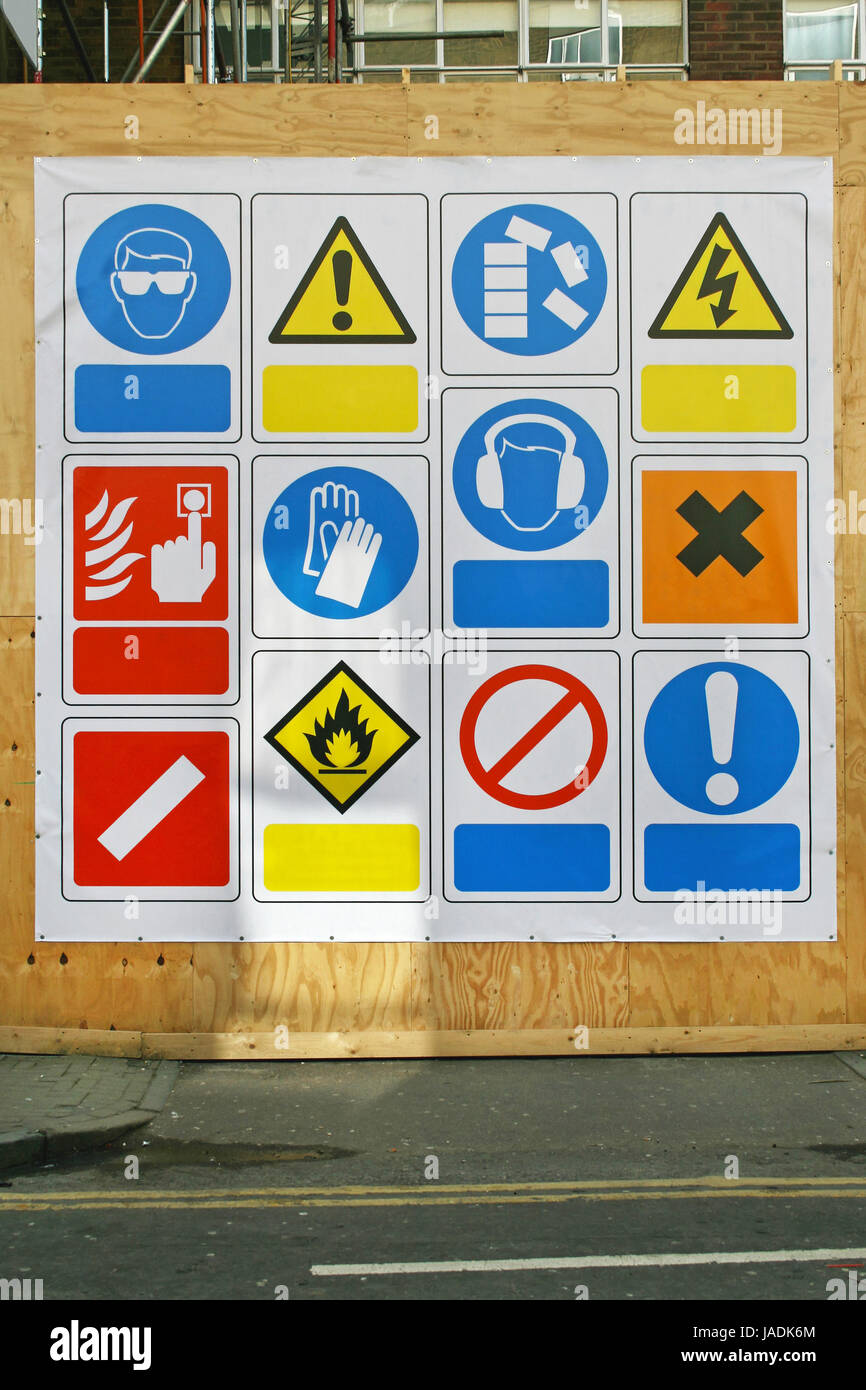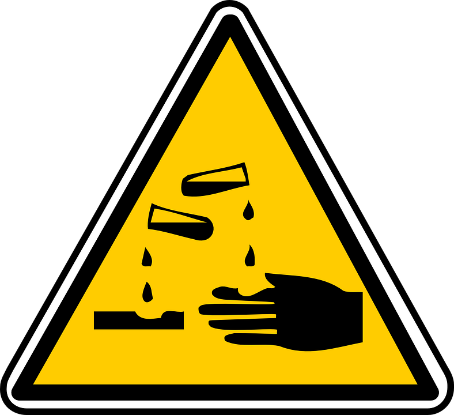Understanding Safety Signs: Their Effect On Workplace Safety and Society
Understanding Safety Signs: Their Effect On Workplace Safety and Society
Blog Article
How Safety And Security Signs Enhance Office Recognition and Conformity
The implementation of safety indicators in the workplace is a crucial variable in enhancing both recognition and compliance among employees. As we take into consideration the different kinds of security indicators and their influence, it becomes vital to discover exactly how these aspects add to a detailed safety and security technique and eventually shape work environment dynamics.
Relevance of Safety And Security Indicators
In many workplaces, security indications play a crucial role in promoting a society of recognition and prevention. These visual signs act as vital reminders for staff members and visitors regarding potential dangers and the necessary preventative measures to take. By successfully conveying essential info, safety and security indicators assist to alleviate dangers connected with different workplace, ultimately fostering a safer atmosphere.
The significance of security signs extends beyond mere conformity with lawful laws; they actively add to the general safety and security culture within an organization. It strengthens their understanding of workplace procedures and boosts their capability to react properly to emergency situations when employees are consistently subjected to clear and noticeable security signs. This aggressive technique not only safeguards individuals yet additionally minimizes the chance of injuries and mishaps, which can have considerable financial and operational consequences for businesses.
Additionally, security indicators act as an important interaction device, bridging the space between varied labor forces, including those with varying degrees of language effectiveness or literacy. By utilizing universally recognized shades and symbols, safety and security indicators can transcend language obstacles, making sure that essential security info comes to all. In recap, the critical application of safety and security indicators is essential for growing a society of safety and duty in the office.
Kinds Of Safety Signs
Safety and security signs can be classified into several distinctive types, each created to share certain information and make sure conformity with safety and security policies. These groups include prohibition indications, alerting signs, necessary indicators, and emergency info signs.
Restriction indications, generally including a red circle with an angled line, indicate activities that are not permitted, such as "No Smoking" or "No Entry." Indication, commonly yellow with a black sign, alert employees to potential threats, such as "Care: Wet Flooring" or "Beware of Pet." These indicators are critical for preventing crashes and keeping a risk-free setting.
Required signs, normally blue and round, inform workers of required habits, such as "Put On Personal Safety Devices" or "Safety And Security Goggles Required." Emergency situation info indicators give important advice throughout immediate circumstances, consisting of escape paths and setting up factors, frequently depicted in environment-friendly and white.
Each sort of safety indicator plays a vital function in cultivating a safety-conscious workplace. By clearly connecting important info, these indicators contribute to a culture of conformity and awareness, inevitably enhancing the general safety of workers and the workplace.
Enhancing Worker Recognition
Effective interaction of safety info is vital in fostering a society of awareness among employees. Security signs function as an essential device in this communication strategy, offering conveniently accessible and clear details regarding possible risks in the workplace. By tactically putting these signs in high-traffic areas, companies can boost visibility and make certain that essential security messages are frequently reinforced.
Additionally, making use of standardized symbols and colors throughout security signs helps to eliminate complication. Workers can swiftly acknowledge and understand the meaning of an indication without needing substantial training. An intense yellow sign showing care informs employees to possible dangers, while a red indicator symbolizes instant threat. This user-friendly design promotes speedy comprehension and encourages positive actions.
Furthermore, including workers in the creation and positioning of safety and security indications can boost interaction and ownership of workplace security. When workers feel bought the procedure, they are more likely to stay vigilant and comply with security protocols. As a result, enhancing worker recognition through efficient safety and security signage not only alleviates threats but likewise grows a proactive safety and security culture that benefits the entire organization.
Conformity With Safety Laws
Just how can organizations ensure adherence to security laws while maintaining a safe work environment? Conformity with safety and security guidelines is necessary for cultivating a society of security and reducing workplace threats.
Safety and security indications play a vital function in compliance by clearly communicating hazards, needed safety procedures, and emergency treatments. When purposefully put, these indicators act as continuous tips of security methods, making certain that workers remain mindful of their environments and the possible threats they might come across.
Furthermore, companies need to carry out routine training sessions that highlight the importance of security laws and the role of signage in compliance. Motivating open dialogue regarding security worries can also enhance adherence to regulations, as staff members feel equipped to discuss hazards or suggest renovations.

Ideal Practices for Implementation
To efficiently implement safety check in the workplace, companies need to start by carrying out a comprehensive evaluation of their certain setting and possible risks. This evaluation allows the recognition of locations calling for signage, such as high-traffic areas, dangerous products storage, and equipment operation sites.

Following, positioning of security indicators is essential. Indicators need to be positioned at eye level and in well-lit areas to make Health and Safety Signs sure presence. Risky zones need to have multiple indicators to reinforce safety messages.

Final Thought
Finally, security indications are integral to promoting office recognition and ensuring conformity with security policies. By properly communicating essential safety measures and prospective threats, these signs improve worker alertness and understanding. Routine training and involvement in the production of security signs even more strengthen a society of security, equipping personnel to actively engage with safety actions. Applying ideal practices in safety indication placement and style ultimately adds to a much safer and extra compliant workplace.
As we take into consideration the various kinds of safety and security indications and their influence, it comes to be vital to check out how these aspects contribute to a thorough safety and security approach and inevitably form work environment characteristics. (Safety Signage)
In summary, the calculated application of safety signs is essential for cultivating a culture of security and responsibility in the work environment.
Additionally, entailing staff members in the creation and positioning of security signs can strengthen engagement and ownership of work environment safety and security.In verdict, security indications are essential to promoting workplace understanding and ensuring compliance with safety guidelines. Normal training and involvement in the development of safety signs further reinforce a culture of safety and security, encouraging personnel to proactively involve with security measures.
Report this page